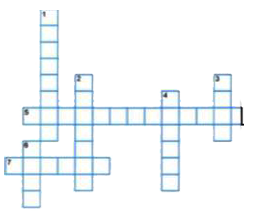Fill in the blanks :
(a) Leaves originate from …1… meristems and are arranged in an ..2.. Order.
b. Leaf develops at the node and bears as ….3.. In its axil .
c. The lamina or the …4… is the green expanded part of the leaf with veins and veinlents .
1- shoot apical ,2 -acropetal , 3- bud , 4- leaf blade
1-intercalary , 2- acropetal , 3- leaflet , 4- leaf base
1- secondary , 2- basipetal , 3-bud , 4- leaf blade
1- shoot apical , 2- acropetal , 3- leaflet , 4- leaf blade
The correct Answer is:A
(a) Leaves originate from shoot apical meristems and are arranged in an acropetal order.
(b) Leaf develops at the node and bears a bud in its axill.
(c ) The lamina or the leaf blade is the green expanded part of the leaf with veins and veinlets.
Similar Questions
Select the CORRECT statements from the following :
(P) In monocots , leaf base expands into sheath covering the stem partially or wholly
(Q) In all leguminous plants, the leaf base may become swollen , which is called the pulvinus
(R) The lamina or leaf blade is green expanded part of the leaf with vein and veinlets
(S) veins provide rigidity to leaf blade.
(a) P and Q only
(b) R and S only
(c) All except Q
(d) All
View SolutionFill in the blanks
(c) The length of perpendicular from a point (1, 2) to a line 3x+4y+5=0 is _________.
View Solution
Knowledge Check
Select the CORRECT statements from the following :
(P) In monocots , leaf base expands into sheath covering the stem partially or wholly
(Q) In all leguminous plants, the leaf base may become swollen , which is called the pulvinus
(R) The lamina or leaf blade bis green expanded part of the leaf with vein and veinlets
(S) veins provide rigidity to leaf bladeAP and Q onlyBR and S onlyCAll except QDAllFill in the blanks :
a. In …1…, the leaf base expands into a …2.. Covering the stem partially or wholly
b. In some …3.. Plants, the leafbase may become swollen, which is called …4…A1-monocotyledons, 2-sheath, 3-leguminous, 4-pulvinusB1-leguminous ,2 sheath, 3-monocotyledons, 4-pulvinusC1-monocotyledons, 2-pulvinus,3-legumninous, 4-sheathD1-leguminous,2-pulvinus, 3-monocotyledons, 4-sheathFill in the blanks :
a. In a…1…compound leaf a number of leaflets are present on a common ….2…, the rachis, which represents the midrib of the leaf as in …3…
b. In …4… compound leaves the leaflets are attached at common …5… i.e., at the tip of petiole, as in ...6...A1-pinnately,2-point,3-neem,4-palmately,5-axis,6-silk cottonB1-palmately,2-point,3-silk cotton,4-pinnately,5-axis,6-neemC1-pinnately,2-axis,3-neem,4-palmately,6-silk cotton,5-pointD1-palmately-2,axis,3-silk cotton,4-pinnately,5-point,6-neem
Copy and complete the following by filling in the blanks 1 to 5 with appropriate words/terms/ phrases:
To test the leaf for starch, the leaf is boiled in water…….(1) It is next boiled in methylated spirit to……(2)The leaf is placed in warm water to soften it. It is then placed in a dish and ......... (3) solution is added. The region, which contains starch, turns...(4)and the region, which does not contain starch, turns ...... (5)
View Solution1. Venation found in monocot plants.
2. A plant in which leaf is modified to catch insects.
3. Underground part of the plant body which fixes it to the soil.
4. Plant that possesses parallel venation.
5. Fusion of male gamete with the female gamete
6. Part of the plant body which is divided in nodes and internodes.
7. Male part of a flower.

View SolutionFill in the blanks:
1. By the end of the ….a… of pregnancy, the foetus develops limbs and digits.
2. By the end of ….b…, the body is covered with fine hair, eye -lids separate and eyelashes are formed.
3. After …c… of pregnancy, the embryo's heart is formed.
View SolutionFill in the blanks:
The meristems which occu at the tips of roots and shoots and produce primary tissues are called …1.. Meristems.
The meristem which occurs between mature tissues is known as …2… meristem
During the formation of leaves and elongation of stem, some cells'left behind' from shoot apical meristem, constitute the…3….
..4… occurs in grasses and regenerates parts removed by the grazing herbiovres.
View SolutionArrange the following five events in a correct order that explains the mass flow of materials in the phloem.
1. Water diffuses into the sieve tube elements
2. Leaf cells produce sugar by photosynthesis
3. Solutes are actively transported into the sieve elements
4. Sugar is transported from cell to cell in the leaf
5. Sugar moves down the stem
View Solution
